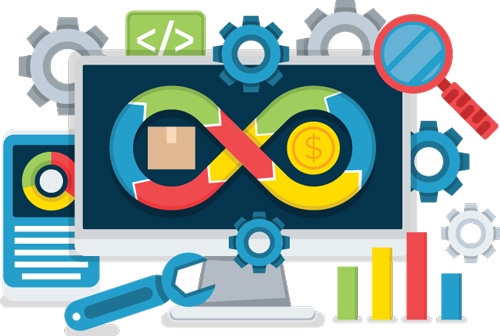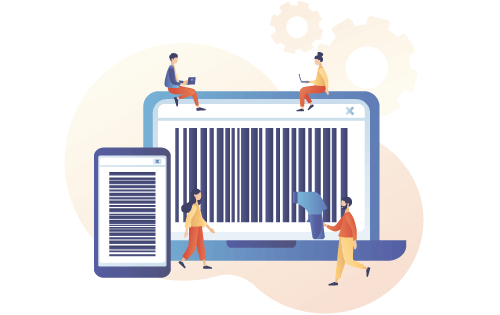What is Multi-Channel Fulfillment?
Built For

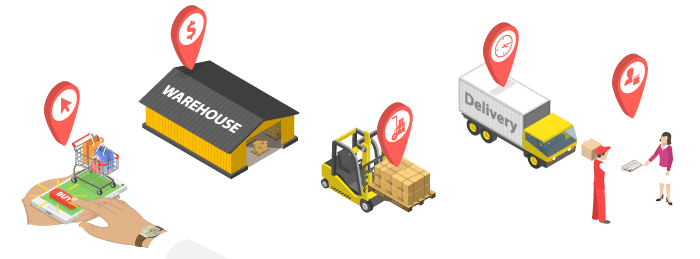
What is Multi-Channel Fulfillment?

In the digital era, the art of selling has transcended the simple exchange of goods by calling a salesperson or walking into a store. Today’s savvy shoppers expect to purchase products through various avenues, whether directly from a website, through sprawling online marketplaces, via the streamlined processes of Electronic Data Interchange (EDI), or from a direct sales team. This diversity in sales channels has given rise to Multi-Channel Fulfillment.
Multi-channel fulfillment isn’t just about getting products out the door; it’s a symphony of strategic coordination that ensures customers receive their purchases how, when, and where they prefer, without a single visit to a physical retail store. While each channel operates on its unique wavelength—online marketplaces pulsing with competitive pricing, websites catering to brand loyalists, EDI optimizing B2B transactions, and direct sales fostering personal connections—they harmonize under Multi-Channel Fulfillment.
So, what exactly is Multi-Channel Fulfillment, and why has it become the heartbeat of modern commerce? Sit back, and let’s unravel the magic behind the scenes that makes this all possible. By the end of this journey, you’ll not only understand the intricacies of Multi-Channel Fulfillment but also why it’s become an indispensable tool for businesses looking to thrive in today’s interconnected marketplace.
Understanding Multi-Channel Fulfillment
Once upon a time, businesses channeled their goods through a single pipeline, often a physical store or a mail-order catalog. However, as technology evolved, so did the avenues through which they could reach their customers. This evolution has led to the birth and booming growth of Multi-Channel Fulfillment—a model that might sound like industry jargon but is actually a simple concept with complex underpinnings.
What is Multi-Channel Fulfillment?
At its core, Multi-Channel Fulfillment refers to the process by which businesses deliver products to consumers via multiple sales channels. These channels may include:
- Website Sales: The digital storefronts where brands can showcase their unique identity and offer a tailored shopping experience.
- Online Marketplaces: The bustling digital bazaars where products vie for attention among a sea of competitors.
- Electronic Data Interchange (EDI): The behind-the-scenes electronic communication system that efficiently and accurately enables large volume B2B transactions.
- Direct Sales: The personal touchpoint for businesses, where sales reps directly engage with customers.
From Single to Multi-Channel – The Evolution of Fulfillment
The shift from single-channel to multi-channel didn’t happen overnight; it’s the result of an adaptive response to changing consumer behaviors and technological advancements. Customers began to seek convenience, variety, and immediacy, and the marketplace responded in kind. Now, instead of waiting for customers to walk through a door, businesses reach out through multiple digital and direct methods, each leading to the same destination: customer satisfaction.
The Components of Multi-Channel Fulfillment
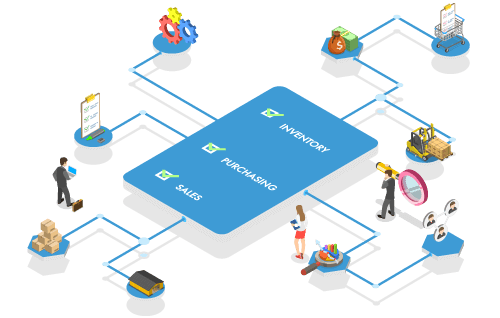
Navigating the digital commerce landscape requires more than a map; it demands a well-oiled machine composed of several intricate parts working in unison. Here are the essential components that make up the Multi-Channel Fulfillment machinery:
Inventory Management Across Multiple Channels
- Centralized Inventory: The backbone of Multi-Channel Fulfillment is a centralized inventory and order management system that tracks, inventory, sales and returns across all channels.
- Purchasing Management: The strategic management of purchases to ensure availability across channels, accounting for channel-specific demand patterns.
- Data Analytics: Leveraging data to forecast trends, manage stock levels, and optimize inventory turnover.
Order Processing: How it Works in a Multi-Channel System
- Centralized Order Management: To accomplish multi-channel fulfillment, orders from all sales channels are centralized in one for processing.
- Channel-Specific Workflows: While all orders are centralized in one system, fulfillment may vary based on customer expectations and channel requirements. For example, EDI orders shipping thousands of widgets are most likely handled with an eye toward cost and efficiency versus direct-to-customer orders that may require expedited shipping.
Returns and Exchanges in a Multi-Channel Setup
- Streamlined Returns Process: A customer-friendly returns system using Return Merchandise Authorizations (RMAs) can handle cross-channel returns without added friction.
- Quality Control: Robust procedures for inspecting, restocking, or disposing of returned goods while maintaining inventory accuracy.
Each of these components must function independently and coalesce into a unified, streamlined process that supports the overarching goal of Multi-Channel Fulfillment: to deliver a consistent, high-quality customer experience, no matter how the customer chooses to engage.
Best Practices for Multi-Channel Fulfillment
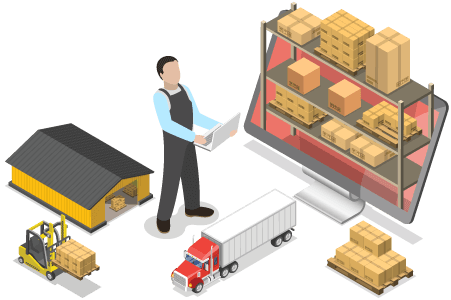
Mastering the art of Multi-Channel Fulfillment is not just about what you do; it’s about how you do it.
Inventory and Order Management Software
- A Unified System: Utilize inventory and order management software that offers a unified platform for tracking inventory, orders, and customer data across all channels.
- Automation: Implement automation within the software to reduce manual entry errors, streamline processes, and increase fulfillment speed.
- Scalability: Choose a software solution that will grow with your business, easily adjusting to increases in volume or expansions into new channels.
Streamlining Operations with Software
- Centralized Control: Manage all channels from a single system to control inventory, pricing, and fulfillment.
- Data-Driven Decisions: Use the analytics and reporting tools of the software to make informed decisions about inventory distribution, procurement, and sales strategies.
- Integrated Accounting: Ensure the software can integrate with QuickBooks for accurate financial reporting and insights.
Reducing Errors and Increasing Efficiency
- Inventory Synchronization: Synchronize inventory across all channels to prevent overselling and stockouts.
- Order Accuracy: Use software features like barcode scanning and order verification to ensure order accuracy, reducing the cost and frequency of returns.
By adopting these best practices, businesses can leverage an inventory and order management software solution to create a Multi-Channel Fulfillment system that is not only effective but also robust and resilient in the face of the ever-changing online landscape.
Real-World Example: Rotorcorp’s Seamless Integration of Multi-Channel Fulfillment

In 2011, entrepreneurial brothers Dan and Sean Casey founded Rotorcorp to supply time-sensitive parts for Robinson Helicopters globally. From its inception as a two-person operation, Rotorcorp ascended to become the leading supplier of Robinson Helicopter parts and overhaul kits for models R22, R44, and R66. Their strategic move in 2018 to become the first Authorized Robinson Service Center selling parts online marked a pivotal transition in their business model.
Rotorcorp’s journey reflects a keen understanding of its customer base, initially fostered through a robust online presence and later enhanced through a comprehensive e-commerce website. This strategic pivot to an e-commerce-centric approach wasn’t just a shift in sales tactics; it represented a fundamental rethinking of customer engagement.
Understanding the necessity of a solid foundation in inventory management, Rotorcorp leveraged Acctivate Inventory Management Software. This integration wasn’t just about technological advancement—it was about customer connection. Acctivate’s integration with WooCommerce and its real-time inventory visibility across sales channels meant Rotorcorp could offer unparalleled service and reliability.
This approach proved revolutionary during the challenging years of 2020 and 2021. Rotorcorp’s e-commerce strategy and multiple warehouse locations stood firm when the industry grappled with labor shortages and logistical nightmares. Their commitment to servicing critical industries—agriculture, law enforcement, and energy—translated into a tangible increase in customer base and an ability to meet essential demands.
CEO Sean Casey’s reflection in Aviation Magazine encapsulates this sentiment: “It’s about more than parts; it’s about trust and support in critical times. Our e-commerce innovations ensured we kept our promise to customers.”
A significant achievement was the integration of live inventory updates on the webstore—a testament to the capabilities of Acctivate and a boon for customers seeking instant visibility on over 3,200 part numbers.
Rotorcorp’s operational efficiency is a byproduct of Acctivate’s seamless order processing, inventory management, and the ability to serve international customers beyond traditional business hours. Stidham acknowledges this: “The flexibility and efficiency afforded by Acctivate have been instrumental in our ability to serve customers promptly and precisely.”
In serving over 60 countries, Rotorcorp’s Multi-Channel Fulfillment strategy leverages physical and virtual warehouses. Acctivate’s sophisticated tracking and forecasting capabilities ensure high-demand parts are stocked and ready for shipment, particularly to smaller organizations in remote areas.
In praising Acctivate, Stidham highlights the robust support system pivotal to his role: “It’s not just a tool; it’s a partnership that grows with us—a reflection of our dedication to excellence in customer service.”
FAQs: Navigating the World of Multi-Channel Fulfillment
What is multi-channel fulfillment?
Multi-channel fulfillment is the process by which a business fulfills customer orders through various channels, such as a website, online marketplaces, EDI (Electronic Data Interchange), and direct sales. It involves managing inventory, processing orders, and shipping products to customers from a centralized system.
How does multi-channel fulfillment differ from traditional fulfillment methods?
Traditional fulfillment typically revolves around single-channel, often retail, where inventory and sales are managed in a single place. Multi-channel fulfillment, on the other hand, requires a business to manage and synchronize inventory across multiple online and direct sales channels, process orders, and handle shipping logistics for each channel efficiently and cohesively.
Can multi-channel fulfillment be handled manually, or is the software necessary?
While it is technically possible to handle multi-channel fulfillment manually, the complexity and scale of managing multiple sales channels make it impractical and error-prone. Inventory and order management software is critical for real-time synchronization, accuracy, efficiency, and customer service that modern consumers expect.
What should I look for in multi-channel fulfillment software?
While it is technically possible to handle multi-channel fulfillment manually, the complexity and scale of managing multiple sales channels make it impractical and error-prone. Inventory and order management software is critical for real-time synchronization, accuracy, efficiency, and customer service that modern consumers expect.
Call us at 817-870-1311


